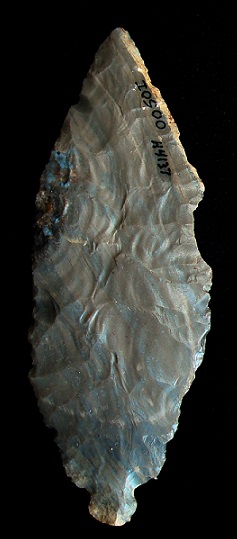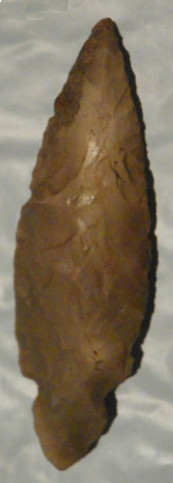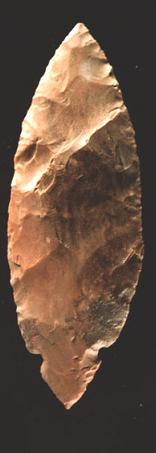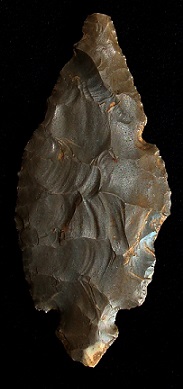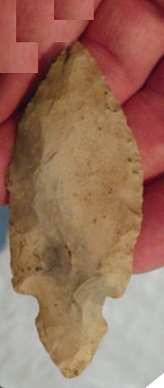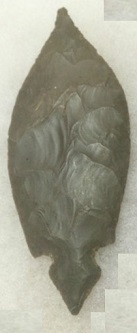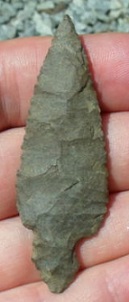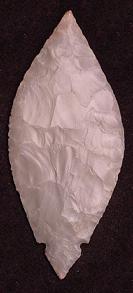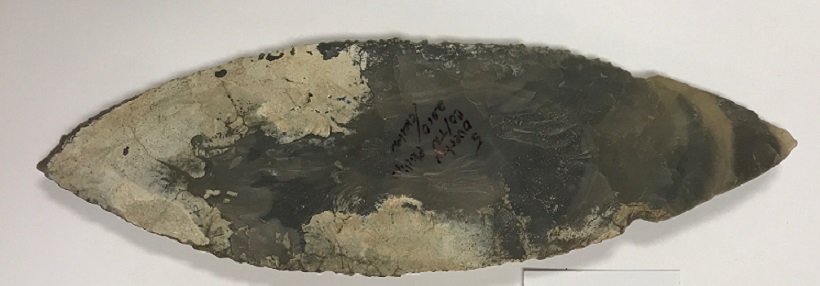Outline is Representative of Size and Shape:
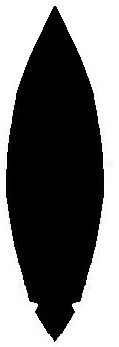
Name Details:
Identified By: Lewis R. Binford
Named For:
Date Identified: 1963
Type Site:
Identified By: Lewis R. Binford
Named For:
Date Identified: 1963
Type Site:
Point Validity:
Valid type
Binford was an influential anthropologist who fundamentally changed the field of archaeology with the introduction of processional archaeology of "New Archaeology". He was a professor at the Southern Methodist University and later the University of New Mexico. This type was named in a professional publication and has many professional references. This is considered a valid type.
Binford was an influential anthropologist who fundamentally changed the field of archaeology with the introduction of processional archaeology of "New Archaeology". He was a professor at the Southern Methodist University and later the University of New Mexico. This type was named in a professional publication and has many professional references. This is considered a valid type.
Fulton Turkeytail
AKA: FultonCluster: Turkeytail Cluster
Description of Physical Characteristics and Flaking Pattern:
This is a thin medium to large side notch point with a flattened cross section. The blade is excurvate with a leaf shape. This point has parallel notches low on the blade, almost at the base. The shoulders are primarily horizontal. The stem may slightly expand at the point of the notch, but then contracts ending at a point. This point has a random flaking pattern and usually has a high quality of workmanship.
Size Measurements:
Length - 100 to 180 mm, Stem Length - 15 to 40 mm (typically 17 to 27 mm), Blade Width - 23 to 60 mm (average 25 to 35 mm), Neck Width - 10 to 35 mm (typically 12 to 18 mm), Stem Width - 12 to 40 mm (typically 14 to 20 mm) Thickness - 6 to 8 mm
Length - 100 to 180 mm, Stem Length - 15 to 40 mm (typically 17 to 27 mm), Blade Width - 23 to 60 mm (average 25 to 35 mm), Neck Width - 10 to 35 mm (typically 12 to 18 mm), Stem Width - 12 to 40 mm (typically 14 to 20 mm) Thickness - 6 to 8 mm
Commonly Utilized Material:
Additional Comments:
Points in this cluster were commonly used from the late Archaic period through the early to middle Woodland period (Justice 1987).
Early Adena points seem to be most commonly associated with the Tennessee River Valley and the point seems to spread from there in the early Woodland period (Kneberg 1956), however, the Adena culture is centered (and thought to originate) in the Ohio River valley (W11).
This variation is similar in size and shape to the Tupelo Turkeytail found in the lower Tennessee River valley. The Tupelo Turkeytail is not associated with the Adena culture and is an older point. This point may be thinner, has shallower side notches and may have a higher quality of workmanship.
This type has a Fulton / Dickson variation which has the shape of the Adena Dickson point, but has the convex base instead of the straight base (Justice, 1987).
Points in this cluster were commonly used from the late Archaic period through the early to middle Woodland period (Justice 1987).
Early Adena points seem to be most commonly associated with the Tennessee River Valley and the point seems to spread from there in the early Woodland period (Kneberg 1956), however, the Adena culture is centered (and thought to originate) in the Ohio River valley (W11).
This variation is similar in size and shape to the Tupelo Turkeytail found in the lower Tennessee River valley. The Tupelo Turkeytail is not associated with the Adena culture and is an older point. This point may be thinner, has shallower side notches and may have a higher quality of workmanship.
This type has a Fulton / Dickson variation which has the shape of the Adena Dickson point, but has the convex base instead of the straight base (Justice, 1987).
Distribution: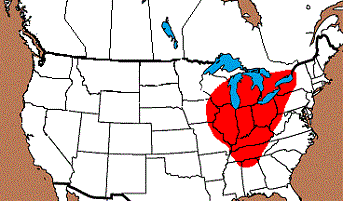
Distribution Comments:
This point has the heaviest concentration in the Ohio River Valley. This point may also be found into the Great lakes region and through out the Tennessee River valley.
This point has the heaviest concentration in the Ohio River Valley. This point may also be found into the Great lakes region and through out the Tennessee River valley.
Age / Periods:
Date: 4,000 - 2,500 B.P.
Cultural Period: Late Archaic to Early Woodland
Glacial Period: Neoglacial
Culture: Adena Culture
Date: 4,000 - 2,500 B.P.
Cultural Period: Late Archaic to Early Woodland
Glacial Period: Neoglacial
Culture: Adena Culture
Age Details:
Other points in this cluster / Related / Associated Points:
Adena Blade, Adena Dickson, Adena Narrow Stem, Adena Robbins, Adena Snapped Base, Adena Vanishing Stem, Adena Waubesa, Cresap, Gary, Harrison Kramer, Little Bear Creek
Adena Blade, Adena Dickson, Adena Narrow Stem, Adena Robbins, Adena Snapped Base, Adena Vanishing Stem, Adena Waubesa, Cresap, Gary, Harrison Kramer, Little Bear Creek

